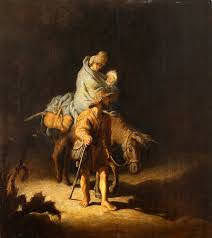Young Rembrandt (@ Ashmoleon Museum)
- ArtsySuzie

- Nov 1, 2020
- 3 min read
Updated: Oct 22, 2022
Inventing the selfie face; struggling with sizing head and body in some images; starting again and reusing copper for a better print; perfecting the art of the shadow; black upon black and cheekily adding himself and his mate into dramatic historical works....It can only be 'young Rembrandt'. We are invited to snigger behind our hands at Rembrandt's fails, and yet, there is still a charm; even his fails and mistakes have considerable talent. So perhaps the sniggering is unwarranted. Also, it was a difficult time to be learning to be an artist - as a family member you were likely to be commandeered as a model and drawn repeatedly; for Rembrandt himself it was learning technique and painfully copying self expressions whilst peering into a mirror.

Then there are the two friends reunited...


The amazing technique of black on black is quite something and his ruffs, so delicate and defined. The portraits are so photographic that it's hard to see that they're painted at all in places.

I just couldn't stop looking at this - the texture, the tactileness, the details of the people fleeing Jerusalem; the 3D quality of the jewels and gold, the almost countable wisps of hair in Jeremiah's beard, the fur trim which surely could be stroked...Then there's the phenomenal placing of light and shade...

And yet Rembrandt could also do this. The falling shadow. The individual hairs. The depth of light and shade.


But Rembrandt didn't just stop there - he skillfully portrays Mary, Joseph and baby Jesus escaping to Egypt, exhausted and frail in semi-European landscapes, exposed and vulnerably human. Yet also hopeful and determined. The version lit only by the lantern and a hint of moonlight is stunning as you have to really look to see the details such as the weary donkey's struggle to keep going, and yet they do keep on going...

Then there are the ambitious textiles, not only the black on blacks, but the imagined Oriental outfits ala Turk or a dramatically befeathered hat. But the feel of the textiles and the shadowed silhouette.

I didn't realise this but Rembrandt had pupils, so often it's working out whether a Rembrandt is full fat Rembrandt or an imitation by a pupil or admirer of his style. And when it is as beautiful as light falling across a room, does it matter?

Fascinating though are the hints of ambition from Rembrandt and the comparisons with his peers, those who didn't become Rembrandt; how Rembrandt and his friend kept reworking each other's styles, inspirations and themes; how Rembrandt would reuse expensive paper and card for other works, leaving us hints of what could have been on the back.
Compassion and sympathy define many of Rembrandt's paintings, such as Philip and the Ethiopian Eunuch. The composition has everyone on a level; Philip is just an ordinary man, not a great white man; the humanity of all is emphasised as is the reality of their emotional reactions to new faith. This quality is also marked in his fashionable collectable pictures of those begging on the streets, and portrayals of elders. Tho he had his moments, as he was painting to a paying market, today we choose to focus on his genius and not the painter who included pooh to make that sale. At a time when people groups, such as Catholics, could be horrifically dehumanised; this baptism portrayal is a happy blast of humanity and equality. Gotta love the horses too - such mirth!





Comments